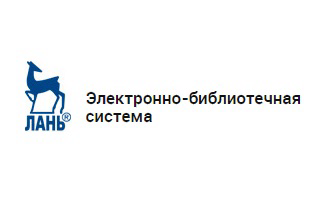| УДК 550.837 | DOI: 10.21440/0536-1028-2021-8-34-44 |
Introduction. The paper considers the theory and interpretation of pulse induction sounding that includes the formation measurement of the magnetic field created by a vertical magnetic dipole (VMD) over a layered medium or S-plane.
Research methods. A spectral calculation method with the numerical Fourier sine transform of the spectral function density was applied to study the non-stationary formation of the field. For the case of a homogeneous conducting half-space with the non-conducting upper half-space, it has been shown that magnetic field frequency and time characteristics change similarly, i.e. decrease equally, as the observation point depth increases.
Research results. The pulsed mode of changing the source current in the near-field zone of low frequencies or long transient periods, which are of primary interest in studying the geological section conducting properties, does not have advantages over the harmonic mode. By analyzing the behavior of a field with a source in the form of a vertical magnetic dipole, it is possible to formulate its limiting frequency and time cases. The nature of the magnetic field formation curve revealed that magnetic induction extrema values do not depend on the specific electrical resistance of the medium. However, their position in time is determined by the distance to the dipole and medium resistivity. For the known spacing for remote sounding, the dependence between the magnetic field extremum time and the medium resistivity is a way to estimate it.
Conclusions. In this work, the apparent resistivity for typical layered cross-sections of two-layer and three-layer media was calculated. It has been shown that the results for dipole magnetic field time and harmonic characteristics correspond to one another when studying inhomogeneous layered geoelectric sections.
Keywords: non-stationary electromagnetic field; remote inductive sensing; vertical magnetic dipole;
apparent electrical resistance.
REFERENCES
1. Veshev A. V. Double current electric profiling. Moscow: Nauka Publishing; 1980. (In Russ.)
2. Gasanenko L. B. The field of vertical harmonical magnetic dipole over the surface of the multilayer
structure. Uchenye zapiski LGU. Voprosy geofiziki = Scientific Papers of the Leningrad State University.
Geophysics. 1959; 278: 164–173. (In Russ.)
3. Zaborovskii A. I. Alternating electromagnetic fields in electrical prospecting. Moscow:
MSU Publishing; 1960. (In Russ.)
4. Kraev A. P. The fundamentals of geoelectrics. Leningrad: Nedra Publishing; 1965. (In Russ.)
5. Zhdanov M. S. Electromagnetic theory and methods. Moscow: Nauchnyi mir Publishing, 2012.
(In Russ.)
6. Svetov B. S. The fundamentals of geoelectrics. Moscow: LKI Publishing; 2008. (In Russ.)
7. Kaufman A. A., Morozova G. M. Theoretical fundamentals of a near-field transient sounding
method. Novosibirsk: Nauka Publishing; 1970. (In Russ.)
8. Mogilatov V. S. Impulse geoelectrics. Novosibirsk: RITs NGU Publishing; 2014. (In Russ.)
9. Rabinovich B. I., Mogilatov V. S. Nonstationary field of submerged vertical magnetic dipole.
Geologiia i geofizika = Russian Geology and Geophysics. 1981; 3: 88–100. (In Russ.)
10. Sidorov V. A. Impulse inductive electrical prospecting. Moscow: Nedra Publishing; 1985.
(In Russ.)
11. Obukhov G. G. Some properties of non-stationary electromagnetic fields in the earth, and their
application in electrical prospecting. 1968; 9: 62–71. (In Russ.)
12. Bhattacharyya B. K. Electromagnetic fields of a transient magnetic dipole on the earth’s surface.
Geophysics. 1959; 24(1): 89–108.
13. Christensen N. B. Imaging of transient electromagnetic soundings using a scaled Frechet
derivative. In: Inverse methods interdisciplinary elements of methodology, сomputation and application.
Lecture notes in Earth sciences. Berlin: Heidelberg: Springerverlag, 1996. Vol. 20. P. 205–214.
14. Pracser E. Fast computing of transient electromagnetic field on the surface of a layered halfspace.
Geofizikai Kozlemenyek. 1992; 37(2–3): 159–176.
15. Wait J. R. Electromagnetic response of a thin layer. Electronics Letters. 1986; 22(17): 898–899.
16. Sheinman S. M. Formation of electromagnetic fields in the Earth. Prikladnaia geofizika = Applied
Geophysics. 1947; 3: 3–55. (In Russ.)
17. Vanian L. L. Fundamentals of electromagnetic sounding. Moscow: Nedra Publishing; 1965.
(In Russ.)
18. Ratushniak A. N., Teplukhin V. K. Theoretical and experimental fundamentals of induction survey.
Ekaterinburg: UB RAS Publishing; 2017. (In Russ.)
19. Arzamastsev E. V., Astafiev P. F., Baidikov S. V., Konoplin A. D., Ratushniak A. N. Inductive
sounding of layered earth. Izvestiya vysshikh uchebnykh zavedenii. Gornyi zhurnal = News of the Higher
Institutions. Mining Journal. 2020; 4: 21–31. (In Russ.)









